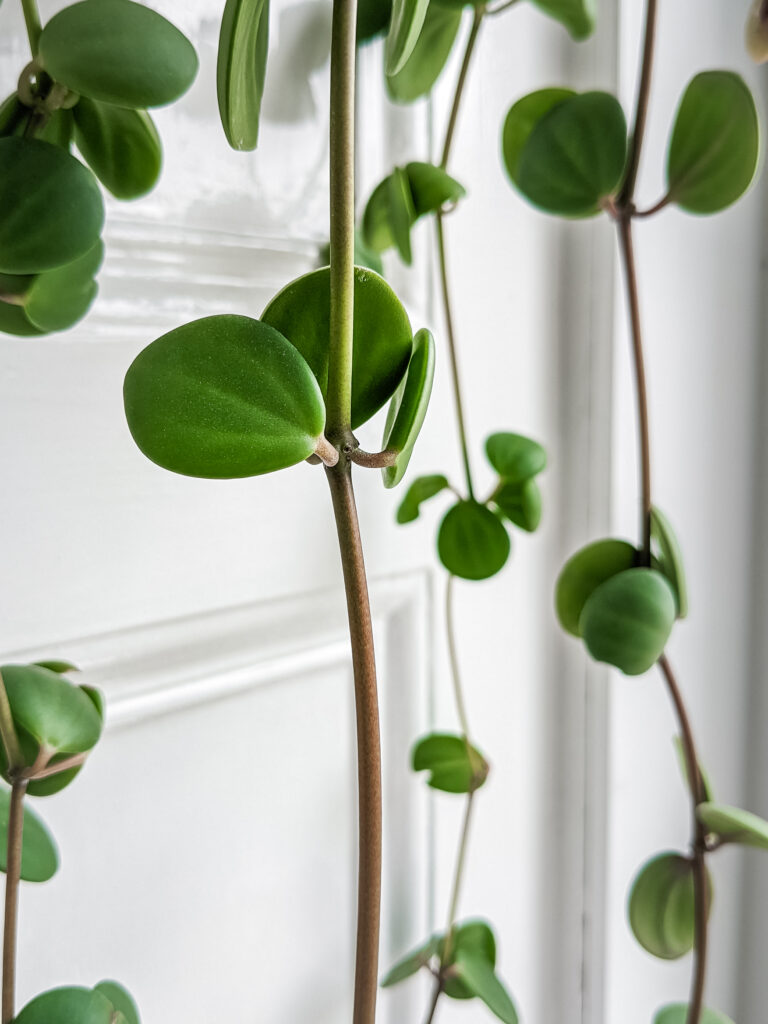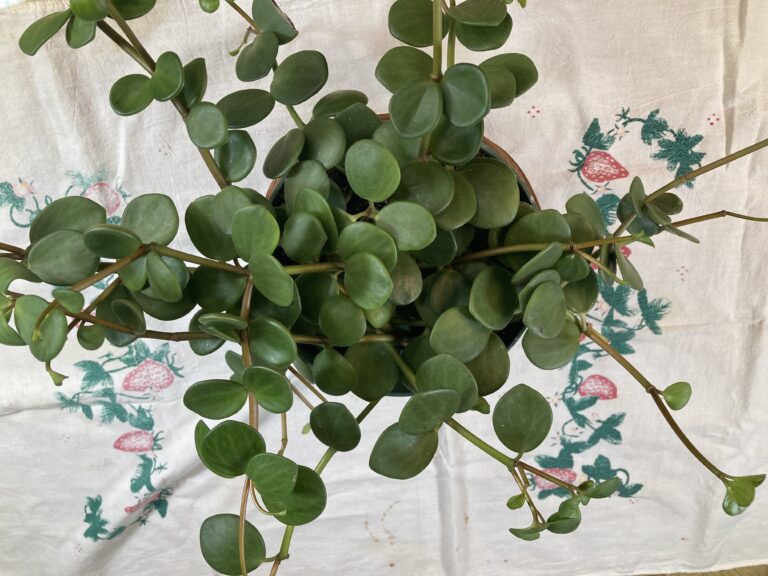Grow Peperomia 'Hope' as a Houseplant
Pretty and low maintenance are two adjectives indoor gardeners look for in a houseplant. Peperomia tetraphylla ‘Hope’ fits that description perfectly. This lovely, easy-care trailing houseplant makes a great addition to your indoor garden.
Sporting small, green, round succulent-like leaves, Peperomia ‘Hope’ is a tropical epiphyte. That means that in its native habitat, which is Central and South America, the plant climbs on and up into other plants and can often be found growing on deteriorating wood.
In the indoor garden, Peperomia Hope makes a great hanging and trailing houseplant. According to Chris Link, co-owner of PlantAddicts.com, where they carry Peperomia Hope, the plant is a slow grower but will eventually reach 2.5 to 3 feet long in ideal conditions.
About Peperomia 'Hope'
Peperomia tetraphylla ‘Hope’ is a hybrid of Peperomia quadrifolia and Peperomia deppeana. The plant is often confused with another small, round-leaved Peperomia cultivar—Peperomia rotundifolia (trailing jade peperomia). However, these are two separate and distinct cultivars.
Peperomia ‘Hope’ can be recognized by its thick leaves that grow in clumps of three or four spaced further apart along the stem than rotundifolia.
You may also find on a more mature plant that it forms brown and green or yellow spindly spikes resembling a thin wax candle. When you see these poking out from the plant, know that they are actually flowers. You can let the flowers grow or prune them off.
Another fun thing to note—Peperomia or peppercorn is a plant in the pepper family, which includes black pepper.
Here’s how to keep Peperomia Hope happy.

Lighting for Peperomia tetraphylla 'Hope'
Peperomia Hope thrives in bright, indirect light. While it can tolerate low light conditions, it may experience stunted growth, fading leaves and leaf drop.
Peperomia tetraphylla ‘Hope’ also does well under full-spectrum lighting, which should be used if the light levels in your home are low—and during lower light times of year, such as the winter months. Avoid direct sun, such as close to a hot Western or Southern window without coverage such as blinds or sheer curtains. The fleshy leaves can burn. Eastern exposure windows are ideal.
Watering for Peperomia Hope
“Overwatering Peperomia Hope will quickly lead to root rot,” says Link. Water the plant when the top 1 to 2 inches of soil have dried out. Use the 1-inch rule of thumb for smaller plants and 2 inches for more mature plants.
Soak the soil in the pot well and ensure that the bottom of the pot doesn’t sit in any excess moisture. Always use warm water when watering. You’ll know you’ve underwatered when the plant leaves curl and crinkle slightly.
Peperomia tetraphylla Fertilizing

Fertilize your peperomia monthly spring through fall with an organic fertilizer. Chemical fertilizers are way too harsh for this plant and many houseplants, and I generally don’t recommend them. They can cause crispy leaf edges on Peperomia Hope.
Don’t fertilize in the winter months when the plant slows down or even stops growth. Give the plant extra added micronutrients and enrich the soil by top-dressing with worm compost every 3 months.
Humidity Needs for Peperomia Hope
Hope Peperomia does come from tropical regions so it appreciates humidity. It can tolerate lower humidity levels, as well, since it is succulent-like in nature. A range of 40–55 percent humidity is ideal. If you have lower than 40 percent in your home, add extra humidity.
Temperature Needs
Peperomia Hope requires fairly warm temperatures, given its origins. The plant will do well between 65 degrees Fahrenheit and 80 degrees Fahrenheit. Keep your peperomia away from drafty areas and heating and air-conditioning vents.
Repotting
Because it is an epiphytes in its native habitat accustomed to growing in very little soil, Peperomia Hope does well rootbound. Avoid potting up into too big of a pot, as that will quickly lead to root rot.
Use care when repotting, as the stems are delicate and easily break. It’s a good idea to plant in terracotta pots for plants you’ll be sitting on a table or putting up high, such as on a bookcase. That will ensure that the roots are able to dry out and don’t remain moist, which can cause rot. This also simulates the way the plant grows in nature. Or if you will be hanging the plant, use a coir hanging basket.
Pruning
Peperomia Hope is lovely when you allow the vines to grow long. However, if you want to grow the plant into a compact and bushy mound, trim the vines on a regular basis.
Pests and Diseases
Peperomia Hope is susceptible to root rot and brown spotting on leaves, which are both caused by fungal infections generally brought on by overwatering. To avoid these problems, make sure not to overwater.
Mealybugs and scale can occasionally be an issue. Treat these pests with 91 percent isopropyl alcohol and make sure you are growing your peperomia correctly, as sickly plants tend to attract pests.





